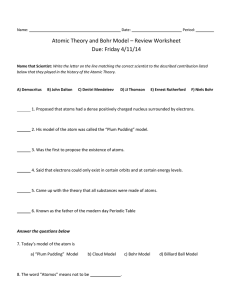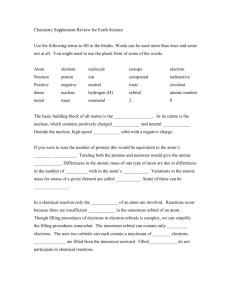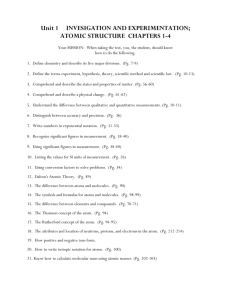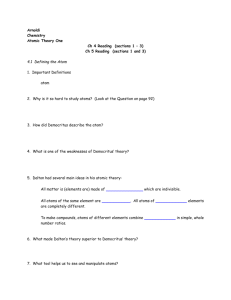Atomic Theory Development: Democritus to Rutherford
advertisement
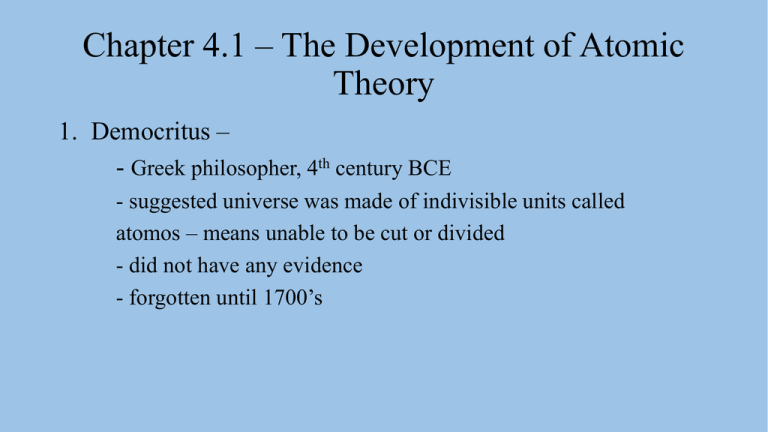
Chapter 4.1 – The Development of Atomic Theory 1. Democritus – - Greek philosopher, 4th century BCE - suggested universe was made of indivisible units called atomos – means unable to be cut or divided - did not have any evidence - forgotten until 1700’s Chapter 4.1 – The Development of Atomic Theory 2. John Dalton – - English school teacher, 1808 - atoms could not be divided - all atoms of a given element were exactly alike - atoms of different elements could join to form compounds - developed the law of definite proportions – a chemical compound always contains the same elements in exactly the same proportions by mass Chapter 4.1 – The Development of Atomic Theory 3. J.J. Thomson – - British scientist, 1897 - studied cathode rays - experiments suggested cathode rays were negatively charged particles from inside an atom - discovered electrons – subatomic particles with a negative charge - proposed the plum-pudding model – electrons are spread throughout the atom Chapter 4.1 – The Development of Atomic Theory 4. Ernest Rutherford – - British scientist, 1911 - proposed most of the mass of the atom was concentrated at the atoms center - conducted gold-foil experiment - discovered the nucleus – the atom’s central region made up of protons and neutrons - Rutherford’s model – negative electrons orbit the positive nucleus





